Did you know that over 70% of structural failures can be traced to poor foundation choices? This eye-opening figure highlights just how critical selecting the right building foundation materials is for every construction project. Whether you’re planning a new home, a commercial building, or retrofitting an older structure, your foundation material decisions will shape the strength, durability, and safety of your investment for decades. Ready to make an informed decision and stop guessing? Let’s explore the best options and how to choose wisely.
Revealing the Essential Facts About Building Foundation Materials
When kicking off any construction project, understanding the basics of building foundation materials is paramount. Foundations do much more than support a structure—they anchor your investment against weather, shifting soil, and time itself. Explore practical examples: poured concrete is the backbone of millions of homes in the United States , while stone foundations still stand strong in countless historic sites. Concrete blocks and wood also play key roles, each suited to unique site and design conditions.
Selecting the right material impacts not just durability and longevity, but also budget, maintenance, and future repairs. For instance, choosing poured concrete can help prevent water damage in wet climates, while wood foundations might be optimal for lightweight structures in low-moisture zones. It’s about matching foundation building materials to your project’s needs and site characteristics, ensuring a strong and durable foundation from day one.
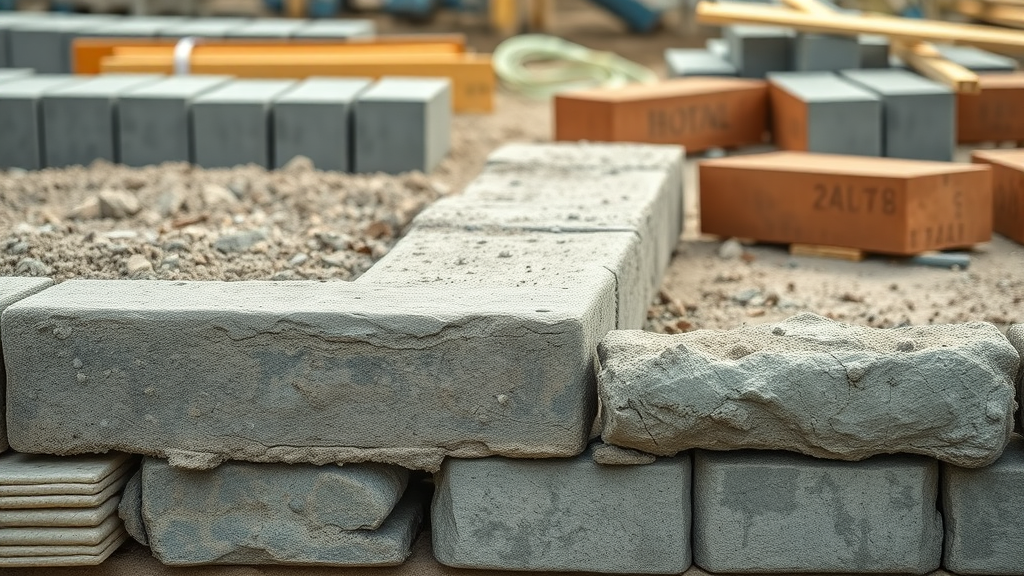
Why the Right Building Foundation Materials Matter: Surprising Industry Statistics
The significance of foundation materials cannot be overstated. According to recent studies, structures built with subpar or mismatched foundation materials are three times more likely to suffer from cracks, settling, and costly repairs. In flood-prone regions, using the wrong foundation can lead to rapid deterioration or collapse. With over 1.5 million new builds annually in the U.S. alone, staying informed means you don’t become a statistical casualty—choose the right foundation building materials and protect your project.
Another compelling statistic: over 55% of residential building restoration projects cite foundation material issues as a primary cause for repair. From overly absorbent soils to high water tables compromising wood or concrete, industry data shows that planning for local conditions and using suitable foundation materials reduces risk and amplifies safety. These facts make a strong case for understanding not just the types of foundation, but the nuances of their material science.
How Foundation Material Choices Influence Durability and Safety
Selecting the ideal foundation material lays the groundwork for a strong and durable structure. For instance, poured concrete foundations offer high compressive strength and moisture resistance—a must for homes in wet climates. Conversely, concrete blocks and stones, when used strategically, deliver long-lasting stability and versatility in various soil types.
Durability and safety intersect at multiple points: soil conditions, expected loads, climatic stressors, and even seismic zones all play a role. The wrong material can undermine safety, leading to cracks, moisture intrusion, mold, or even collapse. Conversely, the right materials prevent water damage , resist settling, and ensure a safe living or working environment. Prioritizing best-fit foundation building materials is the ultimate insurance policy for your investment.
"A well-chosen foundation material is the unseen hero behind every enduring structure."
Understanding Foundation Materials: The Core of Every Structure
Foundation building materials are more than just the invisible base beneath your floors—they’re the technology and science that keep your structure upright and secure, year in and year out. Before you pour, stack, or lay your foundation, it’s vital to know how each material functions and what makes it ideal for particular applications.
From classic stones that have weathered centuries, to modern poured concrete and advanced composites, the spectrum of foundation materials is broad. Knowing their characteristics helps you balance budget, performance, and sustainability, setting your construction project—and your peace of mind—on solid ground.
Overview: Types of Building Foundation Materials
- Poured Concrete
- Concrete Block
- Wood Foundation
- Stone Foundation
- Brick Foundation
- Composite Materials
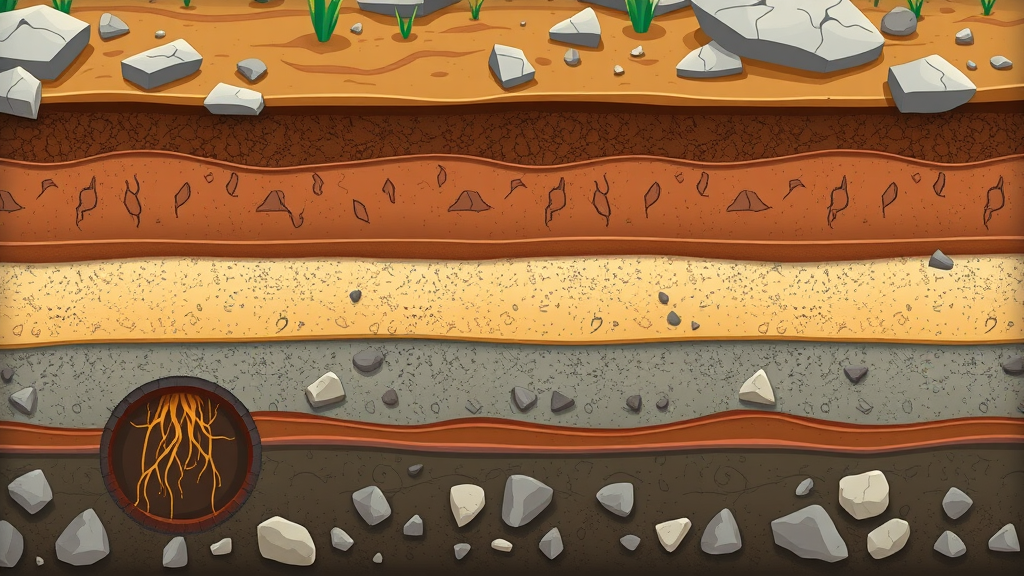
Comparing Foundation Materials: Strength, Cost, and Sustainability
Making an informed decision about your foundation material often comes down to balancing several criteria: strength, lifespan, cost, and environmental impact. Poured concrete is acclaimed for its high compressive strength and long service life, but may cost more upfront compared to concrete blocks or treated wood. Stone foundations , though historic and highly durable in the right conditions, may involve higher labor costs.
Sustainability is a rising concern. Composite and recycled-material foundations are emerging for clients seeking eco-friendly alternatives, but may not yet rival the lifetime performance of traditional building materials like brick or stone. Weigh these variables to tailor your foundation to your values and the demands of your site and design.
| Material | Strength | Lifespan | Cost | Eco-Friendliness |
|---|---|---|---|---|
| Poured Concrete | High | 75+ years | $$ | Moderate |
| Concrete Block | Moderate-High | 50-80 years | $ | Moderate |
| Wood Foundation | Moderate | 30-60 years | $$ | High |
| Stone Foundation | High | 100+ years | $$$ | High |
| Brick Foundation | Moderate | 50-100 years | $$$ | Moderate |
| Composite Materials | Moderate | TBD (20+ years) | $$ | High |
Poured Concrete: The Most Popular Foundation Building Material
Among all building foundation materials , poured concrete stands out as the go-to standard for modern construction. Used in countless residential and commercial buildings , it delivers strength, adaptability, and a long service timeline, making it a staple for concrete foundations across the globe. Poured concrete’s versatility makes it suitable for many types of foundation including slab, crawl space, and basement designs.
Builders favor poured concrete for its ability to form a seamless, solid foundation wall, minimizing weak points and repelling moisture and pests with remarkable effectiveness. Its uniform composition translates to predictable performance—crucial for safety in areas prone to ground movement or high water tables .
What Makes Poured Concrete Stand Out as a Foundation Material?
Poured concrete delivers both compressive and tensile strength, making it a formidable barrier against shifting soils and water intrusion. Modern additives and reinforcements further boost its resistance to cracking and freeze-thaw cycles. In terms of moldability, poured concrete conforms perfectly to site-specific formwork, allowing for adaptable designs and smooth integration with reinforcement materials.
Its durability is legendary—well-constructed concrete foundations routinely last 75 years or more with minimal maintenance. This longevity, coupled with modest maintenance needs and powerful resistance to water damage compared to wood or block alternatives, solidifies its place as the preferred choice for a durable foundation in a wide scope of climates and building sizes.
Installation and Longevity of Concrete Foundations
The installation of poured concrete involves building sturdy formworks, pouring the liquid mix, and allowing time for curing—a crucial phase where the foundation gains its legendary strength. While weather and curing time can impact timeline, professionals prefer this method for its monolithic result and high reliability.
Properly installed, a poured concrete house foundation resists settling, water infiltration, and pests for decades. Its maintenance is minimal, focused primarily on timely repairs of cracks and diligent management of surface water drainage. The result: a strong and durable platform that stands the test of time, making it the foundation material of choice for millions of project owners.
Pros and Cons of Choosing Poured Concrete for Foundation Building
- Pros: High compressive strength, excellent moisture resistance, minimal joints, long lifespan, adaptable to multiple foundation types.
- Cons: Higher upfront material costs, needs careful site preparation, can be susceptible to cracking without proper reinforcement, requires specialist installation.
"Concrete foundations represent the modern standard for residential and commercial buildings alike."
Concrete Block Foundations: A Time-Tested Building Material
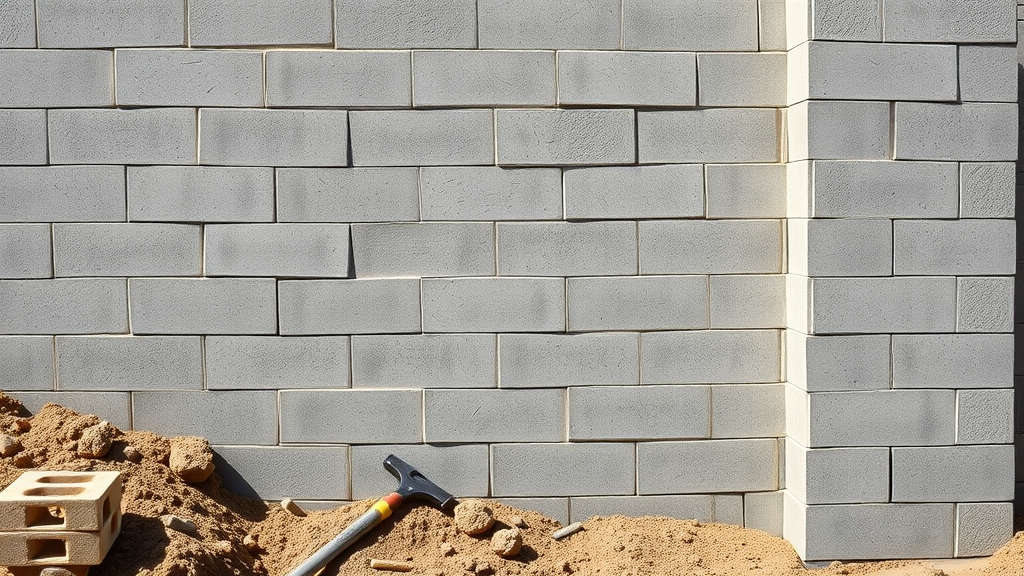
Concrete blocks have served as a tried-and-true house foundation material for nearly a century, balancing flexibility and cost-efficiency without sacrificing structural integrity. These blocks, available in various densities and sizes, are assembled like oversized bricks to build up robust, modular foundation walls.
Favored for speedy installation and adaptability to unique architectural layouts, concrete blocks are especially helpful for projects where poured concrete forms are impractical or too costly. Their hollow centers can be filled with rebar and grout, enhancing both strength and value for homeowners seeking longevity.
Benefits of Using Concrete Block as a Foundation Material
Concrete block foundations are admired for their cost-effectiveness and ease of use. Each block is manufactured to high standards, ensuring consistent dimensions and performance. When combined with proper mortar and reinforcement, a concrete block wall resists soil and hydrostatic pressure almost as efficiently as poured concrete.
Their modularity is a unique advantage: repairs can isolate and replace single blocks, saving time and money compared to monolithic fixes. And because of natural air gaps within the block, these foundations inherently offer some insulation and can be customized for crawl space or basement types of foundation. For many mid-sized homes and light commercial projects, concrete blocks supply an ideal mix of durability, affordability, and versatile performance.
Concrete Block vs. Poured Concrete: Key Differences for Homeowners
- Installation: Block requires manual stacking and mortar joints, poured concrete relies on extensive formwork and one-time pouring.
- Strength: Poured concrete is generally stronger and more seamless; blocks can approach similar strength with correct reinforcing.
- Cost: Concrete block construction typically costs less, especially for smaller or irregular-shaped foundations.
- Repairs: Individual block sections are easier and cheaper to mend if movement or settlement occurs.
- Insulation: Block foundations can be insulated within block cavities, but poured concrete usually demands external or internal insulation.
Video Resource: Watch a side-by-side overview of concrete block and poured concrete foundation construction methods, showing real on-site challenges and best practice installations.
Wood Foundations: A Unique Option Among Building Foundation Materials
Though unconventional by today’s standards, wood foundations have played an important role in residential construction projects, particularly in regions with low moisture, low termite risk, and moderate climates. With modern treatment processes, wood can function as a reliable foundation material for homes, cabins, and lightweight buildings.
This type of foundation is best suited for above-grade and crawl space applications, where the risk of water damage is controlled and proper drainage solutions can be installed. Utilizing wood for foundations enables rapid, dry-season construction with excellent insulating potential, slashing both costs and greenhouse gas footprint.
Where and When to Use Wood Foundation Materials
Consider wood foundations for smaller homes, outbuildings, or modular projects where soil moisture is reliably managed, and the local climate is mild. They shine in parts of the United States and Canada that offer sandy or well-drained soils, as well as elevated designs such as crawl space foundations .
Builders embrace wood when speed, flexibility, and lower embodied energy outweigh ultimate longevity. Modern wood foundations are pressure-treated for rot and pest resistance, ensuring safe use in a broader range of construction projects. However, always check against current building codes and local regulations to ensure compliance.
Advantages and Drawbacks of Wood Foundations
- Advantages: Fast and cost-effective to build, lighter on structures, high thermal performance, renewable, and sustainable foundation option when sourced responsibly.
- Drawbacks: Lower lifespan compared to stone or concrete, vulnerable to moisture and pests in unsuitable environments, periodic inspection and maintenance required.
Stone Foundations: Exploring Historic and Modern Applications
Stone has been used as a building foundation material for millennia, favored for its availability, strength, and sheer longevity. Many historic buildings that still stand today do so because of stone foundations with careful craftsmanship. In select modern projects, especially where aesthetics or heritage restoration is a priority, stone continues to be an extraordinary option.
The unique character and beauty of a stone foundation are unmatched. Stone’s natural ability to resist moisture, frost, and settling makes it a sturdy choice for well-drained sites—but not every soil is suitable, and labor costs remain high. For those restoring or replicating original construction, stone’s unparalleled durability and authenticity justify the investment.
How Stone Foundation Materials Withstand the Test of Time
Stone foundations are inherently resistant to rot, pest infestation, and extreme weather. Their massive size and irregular shapes interlock naturally, distributing loads evenly and mitigating the risk of cracks. While stone is less utilized in modern high-rise applications due to load calculations, it remains a top choice for restoration , rural homes, and architectural showcases.
Decades—or even centuries—of service are possible with minimal maintenance, provided the base is well-drained and mortar joints are maintained. The difficulty lies largely in skilled installation and occasional tuckpointing or stabilization.
Restoring and Retrofitting Old Stone Foundation Building Materials
Preserving or upgrading historic stone foundations requires specialized knowledge. Restoration often involves re-pointing mortar, installing interior drains, and occasionally integrating modern reinforcing to address shifting, settling, or high water table issues.
When performed with care, retrofitted stone foundations can meet or exceed the performance of some modern materials, offering a sustainable and visually stunning solution that honors the legacy of the original builders.

Other Foundation Building Materials: Brick, Composite, and Innovative Choices
Most modern builds rely on poured concrete, blocks, wood, or stone—but there’s a growing niche for alternative foundation materials . Brick foundations are classic in 18th and 19th-century sites, prized for charm and resilience. Composites, which may include geo-polymers, recycled plastics, and engineered masonry, promise lower environmental impact and new frontiers in foundation construction .
Innovations like insulated concrete forms and polycarbonate basements are gaining traction in energy-efficient and eco-friendly homes. Regardless of tradition, the future of foundation building materials is bright for those willing to explore new science and sustainability trends.
Emerging Trends in Foundation Building Materials
Rising demand for sustainable building and net-zero construction is fueling the adoption of recycled materials, low-carbon concrete mixes, and modular components. Composites offer impressive thermal performance, lighter weight, and adaptability—not yet mainstream, but a clear sign of the evolution in the building industry.
Watch this space: as building codes and buyer preferences shift, expect to see more composite and innovative foundation solutions making their way into both commercial and residential projects.
Video Resource: Discover new developments in foundation materials with an expert interview covering trends, performance, and industry adoption.
Types of Foundation: Matching Materials to Foundation Designs
Every construction project rests on picking the right type of foundation and then matching optimal foundation materials to that design. Common types—slab, crawl space, and basement—demand distinct characteristics around strength, moisture resistance, and insulation.
Choosing correctly means more than just code compliance. It ensures the structure is protected from shifting soil, seasonal moisture, and long-term settling. Let’s break down key matches between foundation types and best materials for each.
Slab Foundation Materials: What to Know
Slab foundations —flat, monolithic concrete pads—are a leading choice in warm climates with stable soils. Poured concrete is the clear favorite here for its ability to form a seamless, moisture-resistant platform that supports small and large house foundations alike. In areas with minimal frost, slabs are efficient, affordable, and require fewer materials compared to deeper foundations.
To maximize performance, builders may add reinforcing steel for extra compressive strength and vapor barriers to prevent water damage . While composite and insulated concrete variants are on the rise, poured concrete remains dominant for slab applications due to its consistency and reliability.
Crawl Space Foundations: Best Materials for Moisture Control
A crawl space foundation raises the home above ground level, allowing easy access to utilities while providing a buffer against damp soil. Concrete block and poured concrete are common choices due to their ability to withstand soil pressure and repel moisture. Vapor barriers, drainage systems, and periodic checks play a vital role in maintaining crawl space health.
In select geographies and smaller builds, a treated wood foundation may suffice, but careful moisture management and local building codes are essential. The right choice delivers a space that resists rot, mold, and pests, ensuring a comfortable and healthy living environment.
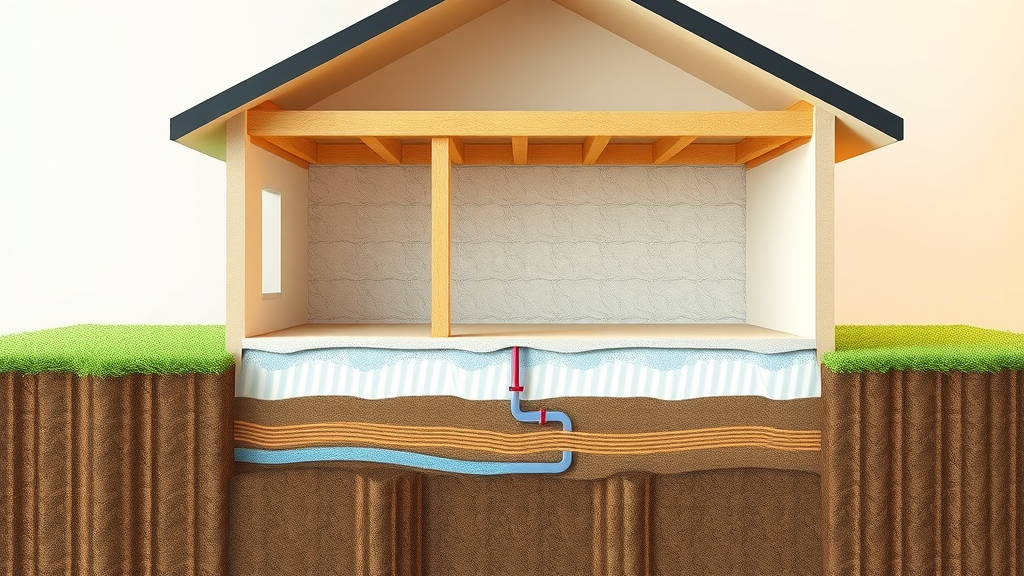
Basement Foundations: Choosing the Right Building Materials
Basement foundations must withstand immense soil pressure and variable moisture over decades—making material selection critical. Poured concrete remains the gold standard, but concrete block and stone are also popular in custom and historic construction.
Correct waterproofing, proper grading, and reinforcement guard against water damage and settling. Choosing the right blend of materials—perhaps a stone-veneer finish with a poured concrete structural wall—combines aesthetics with maximum safety and longevity for the entire project.
- Shallow Foundations
- Deep Foundations
- Hybrid Foundation Systems
Building Codes and Standards for Building Foundation Materials
Every foundation construction project is governed by an array of building codes and standards that dictate proper materials, installation practices, and minimum safety factors. Compliance is not just a suggestion—it’s essential for legality, safety, and insurability.
Local codes are tailored to regional risks including earthquakes, frost lines, and potential flooding. Selecting approved foundation building materials and adhering to regional best practice is the only way to guarantee lasting performance and legal peace of mind.
Compliance Requirements for Foundation Construction
Globally, and especially in the United States , building codes require thorough documentation and routine inspection of all foundation construction . Materials must meet ASTM or equivalent standards for compressive strength, fire resistance, and environmental impact.
Permits, regular quality checks, and specialized testing become non-negotiable once the project begins. Compliance not only ensures safety but also protects the project from unexpected shutdowns, fines, or remediation work.
Regional Considerations for Selecting Foundation Materials
Climate and local geography are significant factors in material selection. Frost-prone climates demand deeper, more robust materials to resist heaving. High rainfall or high water table regions require maximum moisture resistance, favoring poured concrete or stone over wood or brick.
Ignore these realities, and the best plans can crumble—literally. Always consult local experts and review regional building codes for guidance on the best foundation material for your location.
Selecting Building Foundation Materials: Expert Tips and Common Mistakes

Selecting the right foundation building materials can feel overwhelming given the wealth of options and technical details. However, following fundamental expert tips can help you avoid costly mistakes. Begin with a soil test and precise load calculations—these form the basis for matching foundation type and material to the landscape’s demands.
Working with experienced professionals, ask questions about durability, code compliance, and long-term maintenance. Factor in the full life cycle cost—not just the price of materials but also potential repairs or upgrades—which often tilts the balance in favor of poured concrete or reinforced block options.
Factors Influencing Foundation Material Selection
- Soil conditions (clay, sand, rock, water table height)
- Building loads (size, weight, occupancy)
- Climate and moisture risk
- Local availability and building codes
- Budget, sustainability goals, and future-proofing
Avoiding Pitfalls in Foundation Building Material Choices
- Skipping professional soil/structural analysis
- Ignoring water management (drainage, waterproofing)
- Selecting unapproved or below-standard materials to save money
- Neglecting routine maintenance or failing to address early warning signs of damage
"Your foundation is only as strong as the materials you choose."
Video Resource: See how pros inspect, test, and select superior foundation materials on an active jobsite for maximum durability and code compliance.
People Also Ask: Building Foundation Materials Insights
What material is used for building foundations?
The most common materials used for building foundations include poured concrete, concrete blocks, stone, brick, and treated wood. Each offers unique strengths and is suited to particular soil conditions, project sizes, and local building codes. Modern projects usually favor poured concrete for its strength and uniformity, but renovations and historic homes may use stone or brick to preserve character and authenticity.
Detailed Answer: The Essential Materials in Foundation Building
Concrete (poured or block) remains the primary choice for most modern homes and commercial builds due to its high compressive strength and versatility. In addition, treated wood is used in some above-grade or modular designs, while stone and brick find favor in restoration and period properties. New composite materials and advanced concrete mixes are entering the market, offering eco-friendly alternatives for future-focused projects.
What is the best foundation material?
Poured concrete is broadly considered the best foundation material for its ideal mix of strength, moisture resistance, and long life. However, the “best” choice depends on climate, soil, and project needs—stone excels in durability and tradition, while concrete blocks offer affordability and modularity. Site analysis and code compliance should always inform the final decision.
In-Depth Answer: Choosing the Best Building Foundation Material for Your Project
Begin by assessing soil conditions and building requirements. For wet or unstable soils, poured concrete is often the safest foundation building material. For smaller homes with good drainage, wood can suffice. Prioritize durability, minimal maintenance, and adherence to local codes. Considering hybrid systems—combining stone with concrete reinforcements, for example—can also yield the best of both worlds in certain locations.
Who bought foundation building materials?
Stakeholders who regularly purchase foundation building materials include homeowners, builders, general contractors, developers, restoration specialists, and even local municipalities for public infrastructure projects. These buyers are typically motivated by factors like longevity, safety, and cost, ensuring projects meet or exceed expectations and mandatory codes.
Insight: Stakeholders and Buyers in Foundation Materials Industry
Residential builders and developers remain the largest purchasers, but the market is expanding with more do-it-yourself homeowners and sustainable building advocates. Commercial real estate, historical property renovators, and even agricultural facility planners all routinely buy foundation building materials to address their specific durability, aesthetic, and code requirements.
What are the four types of foundation materials?
The four key categories of foundation building materials are poured concrete, concrete block, stone, and wood. Brick and composite materials add viable alternatives or supplements in specific scenarios. Each of these core material types showcases a unique blend of benefits and limitations.
Comprehensive Answer: Four Main Categories of Foundation Building Materials
Poured concrete reigns supreme for strength and flexibility; concrete blocks add adaptability and ease of repair; stone foundations remain unmatched for longevity and historic projects; and wood enables fast, lightweight, and eco-friendly builds where soil and climate allow. Blending or upgrading these basic types with composites and modern treatments is an emerging trend for future builds.
Frequently Asked Questions About Building Foundation Materials
-
How do I determine the best foundation material for my climate?
Research local soil and weather patterns, and seek expert advice to match materials to your environment and code requirements. -
Can I mix different foundation building materials in one project?
Yes, hybrid foundations are possible, but higher complexity demands careful engineering and code compliance. -
What are the latest innovations in foundation materials?
Composite and recycled materials, advanced concrete mixes, and insulated forms are gaining popularity for sustainability and performance. -
Are sustainable foundation materials effective and reliable?
When specified and installed correctly, sustainable foundation materials can meet required standards while reducing environmental impact. -
How often do building codes for foundation materials change?
Updates occur regularly—consult your local authorities or building inspectors before starting any construction.
Key Points to Remember When Selecting Building Foundation Materials
- Always match foundation material to soil conditions and loads.
- Consider longevity, maintenance, and local building codes.
- Factor in regional climate impact and environmental sustainability.
- Get expert advice for complex foundation projects.
Unlock More Building and Construction Wisdom
For more insights on building foundation materials and industry trends, visit us at https://buildingconstructiontrade.com/ for more building and construction news.
Take action today: assess your site, consult experts, and choose the right foundation building materials for a structure that stands the test of time.
 Add Row
Add Row  Add
Add 


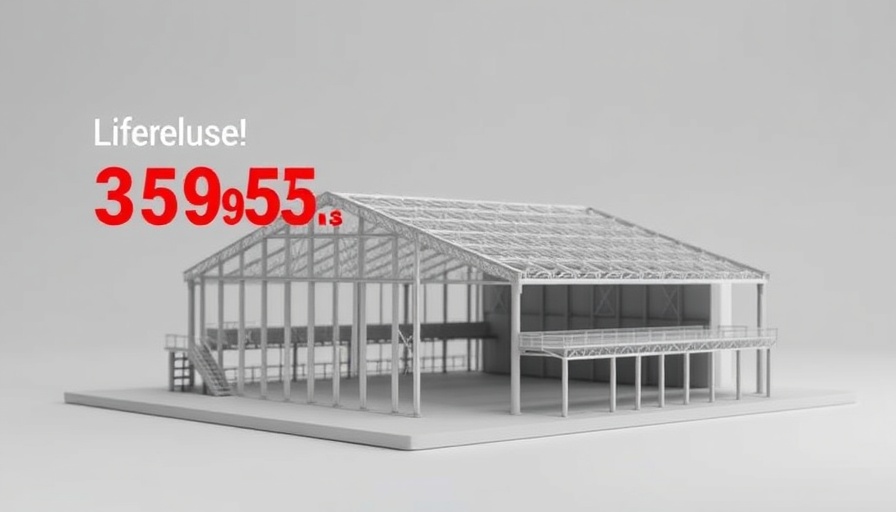

Write A Comment